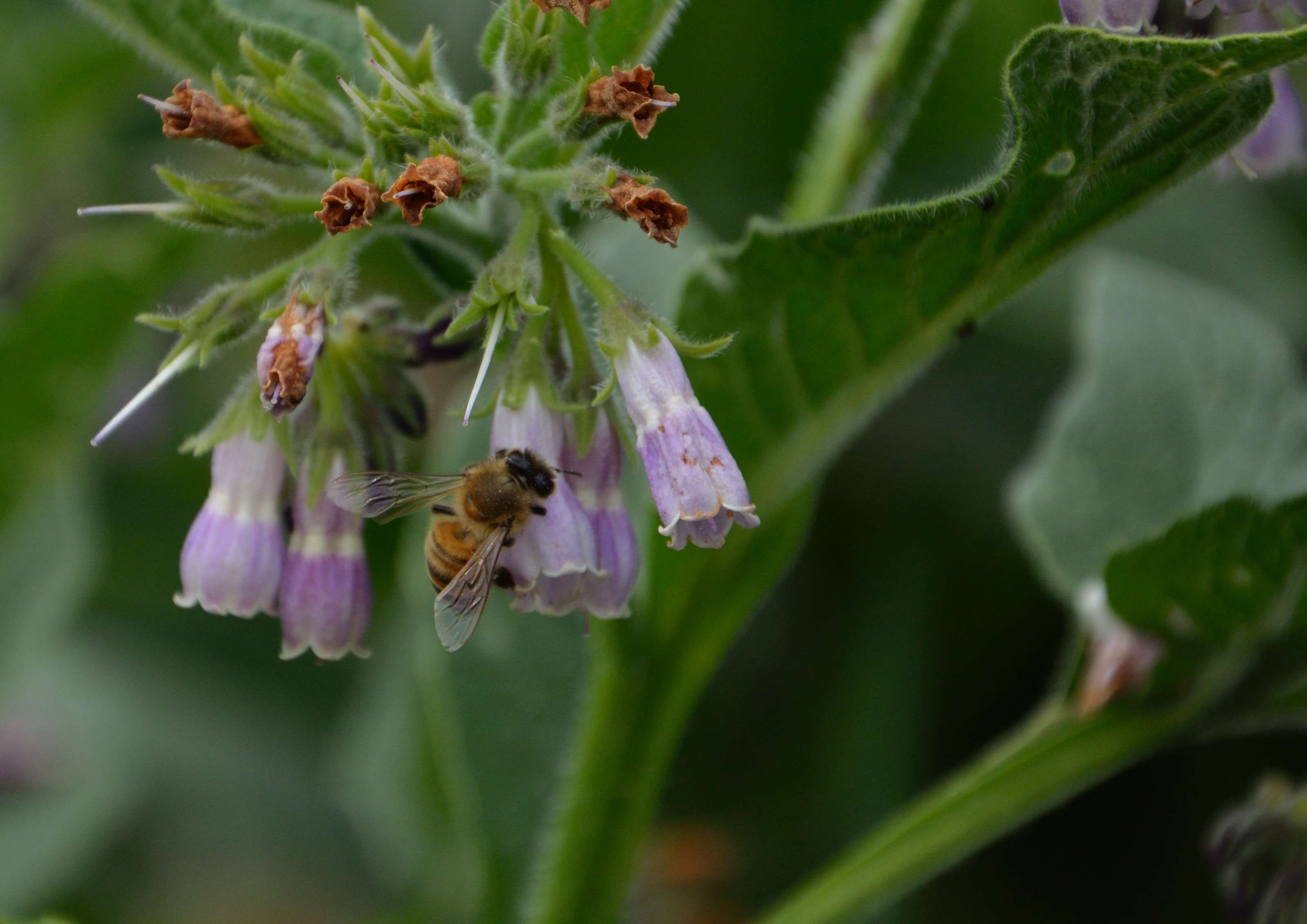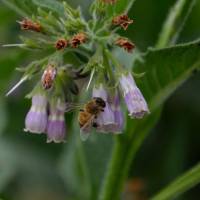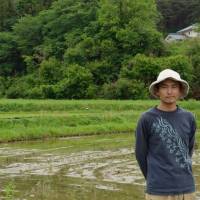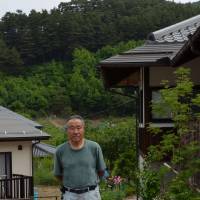"That's where they're going to spray."
Organic farmer Naoki Tachikawa, 43, is standing on the edge of one of his tiny rice fields in the Shiga district of Matsumoto, central Nagano Prefecture, pointing at two low hills that embrace the upper reaches of the terraced valley floor. The hills, which taper off about 200 meters from the field, are clothed in Japanese red pines. With their russet trunks and deep-green foliage, the trees look like a classic woodblock print come to life.
A second glance reveals a problem: On several trees the needles are red, not green. In fact, those trees are dead, and soon the whole stand may be, too — the latest victim of a pine-wilt disease that has marched east from Kyushu over the past century. Though it peaked in 1979, it has continued to wipe out trees in new regions ever since.
Matsumoto's city government has a plan to save the pines in Shiga — though it's one that has turned the secluded farming district into another front in a controversy dividing rural districts throughout Japan. At stake are bees, trees — and maybe human health.
On June 20, a 3.6-meter-long radio-controlled helicopter will fly over the pine forests near Tachikawa's field and those of several others to release a mist of insecticide called Matsugreen (matsu means "pine"). The aim is to kill Japanese pine sawyer beetles spreading alien North American nematodes (roundworms) that cause pine wilt. It's a strategy already in use throughout Japan.
However, Matsugreen belongs to a family of chemicals around which a firestorm of debate is raging in Europe, the United States and, increasingly, in Japan. Acetamiprid, its active ingredient, is a type of neonicotinoid — nicotine-related chemicals that kill insects by disabling their nervous systems. Since they were introduced in the 1990s, they have become the world's most widely-used class of insecticide.
What is fueling the firestorm is the fact that, over the same period, honeybee populations in many countries have fallen at alarming rates — and a growing body of research suggests the two phenomena may be linked. The concern over bees isn't just on animal-welfare grounds, but because they pollinate two-thirds of the world's major food crops, according to the United Nations Food and Agriculture Organization.
Consequently, though the evidence is not yet conclusive and other factors almost certainly play a role, the European Union has decided to ban three of the pesticides from December. The move was based on a January report by the European Food Safety Agency which concluded that some neonicotinoids pose a "high acute risk" to pollinators.
Japanese beekeepers have also reported mass bee deaths they believe are caused by neonicotinoid exposure. The government, though, has neither confirmed their suspicions nor banned use of the chemicals.
Now the Matsumoto authorities plan to spray them on Shiga's forests, and organic farmer Tachikawa worries about effects on the pollinators he's always taken for granted.
"This is a great place, with a great natural environment. Dousing the mountains with large quantities of pesticides is definitely going to affect the ecosystem," he says as a chorus of endemic Schlegel's green tree frogs (Rhacophorus schlegelii) backs him up from his rice fields. "Bees and other wildlife can't speak for themselves, but we need to value them."
After learning of the city's plans to spray the trees, Tachikawa joined a group of about 30 residents actively opposing the plans due to environmental and human-health concerns. They have petitioned city hall, launched a public-education campaign and spoken up at town meetings. They have also tried to boost trees' resistance to the disease by spreading charcoal in forests.
Farmers in Shiga already use neonicotide insecticides on crops, especially rice. Nationwide, use of the family of chemicals nearly tripled between 1996 and 2007 — though they still rank far below other types. But the group Tachikawa joined — the Association to Think about Life in Rural Shiga — has not called for an end to all agricultural uses.
"I can't tell my neighbors what to do on their property. (But) the overhead spraying (of forests) is a public issue, and it's subsidized," says the organization's co-founder and director, Machiko Ichihara, 63, a yoga teacher who moved to the district from Nagoya four years ago.
Despite her efforts, though, the spraying plan has already been approved by all of Shiga's neighborhood assemblies.
Yoshiichi Ohsawa, 76, is among those Shiga residents who feel the chemicals are the only way to protect thousands of hectares of economically, culturally and environmentally valuable forest. A farmer and member of the district's Committee on Pine-Wilt Disease Countermeasures, Ohsawa owns six hectares of forest where he harvests matsutake mushrooms, delicacies that sprout from pine roots. Domestic matsutake can fetch ¥100,000 or more per kilogram, partly because pine-wilt disease has made them scarce.
The mushrooms are an important local product. Many neighborhood associations auction off harvesting rights to patches of forest and use the proceeds to fund events.
Ohsawa says the pines are also important aesthetically and environmentally. They make up 40 percent of Shiga's forests, with certain groves protecting water sources and preventing erosion. However, they are dying, with pine-wilt claiming 1,206 in the locality in 2011 compared with 281 five years earlier. Scientists have many theories about why the disease is spreading so quickly: global warming, air pollution and the fact that most forest owners no longer inspect or thin their trees as meticulously as they did when timber prices were higher.
"We have been cutting the diseased trees, wrapping the lumber in plastic, and treating it with chemicals to kill the insects. But the disease is moving faster than us. We can't keep up," Ohsawa says. "There's no realistic choice aside from overhead spraying."
Kazuo Ota, a plant ecologist and organic farmer living an hour north of Matsumoto, believes otherwise.
"Why do we need to preserve these forests to the point of spraying them with insecticides every year? Why not just leave things to nature, and let the pines die off and transition to oaks or whatever else grows?" says Ota, who studied the problem in his former position as curator of the Saitama Museum of Natural History.
In fact, that is what Matsumoto officials have decided to do in many areas. Only groves like those in Shiga deemed important for matsutake production or disaster prevention are slated for the controversial overhead insecticide treatment. The project begins this year with 20 hectares and will probably expand in coming years, according to Shigeru Kusada, the city employee in charge.
Like Ohsawa, Kusada says spraying is the only way to save the trees. But as a hobby beekeeper, he worries about the insecticide's potential impacts. Leafing through a thick sheaf of documents, he arrives at a study claiming acetamiprid (the chemical the city has chosen) impacts bees far less than some other neonicotinoids. It is not among the three insecticides the EU has banned.
According to a pamphlet published by the chemical's maker, Nippon Soda, and distributor, Nisso Green, Matsugreen is "gentle on the environment"; "has little impact on honeybees"; and "is broken down quickly by microorganisms in soil and river water." Some independent studies suggest otherwise; the city will test for water and air contamination after spraying.
At the request of beekeepers in the area, officials have also postponed the first spray date until after acacia trees have finished blooming. Acacia flowers are a favorite of honeybees; because they sometimes grow near pines, flowers could be inadvertently contaminated by spray.
The radio-controlled helicopters that will do the spraying will fly about 5 meters above the forest, allowing for fairly precise application and reducing the risk of drift compared to manned helicopters that would fly about 10 meters above the treetops.
Such provisions put Matsumoto ahead of many municipalities in Japan in terms of taking bees into consideration. Neonicotinoids and organophosphate insecticides were applied on 24,000 hectares of pine forest nationwide in 2009. Manned helicopters were the most common means of spraying, and clothianidin — one of the chemicals recently banned in Europe — remains on the list of approved substances. However, at least seven prefectures have suspended spraying programs due to public opposition, mainly from residents worried about human-health impacts.
After overhead spraying to kill pine beetles in Shimane Prefecture in June 2008, more than 1,000 local residents — mostly children — complained of health problems such as itchy and painful eyes. Similar cases have arisen elsewhere. Some researchers also argue neonicotinoid exposure is behind problems ranging from short-term memory loss to aggression and insomnia — though these claims remain very controversial.
Kusada says Matsumoto will stay its course despite these concerns. He notes that neighborhood assemblies approved the plans through a democratic process that included a series of explanatory town-hall meetings.
Back in her simple farmhouse in Shiga, Ichihara reflects on the nature of that decision-making process.
"Officially it's democratic but it's not really democratic at all," she says. For instance, she points out that votes were taken by a show of hands rather than by secret ballot. That matters in a conservative rural community like Shiga, where even committed activists say they feel pressure to avoid open conflicts with neighbors. Ichihara is a rare exception.
"The other members of our group have families and jobs and clients living in this village. They have to be subtle," she says. "I'm head of this group because I don't need to be here. I can pick up and move. I'm free."






